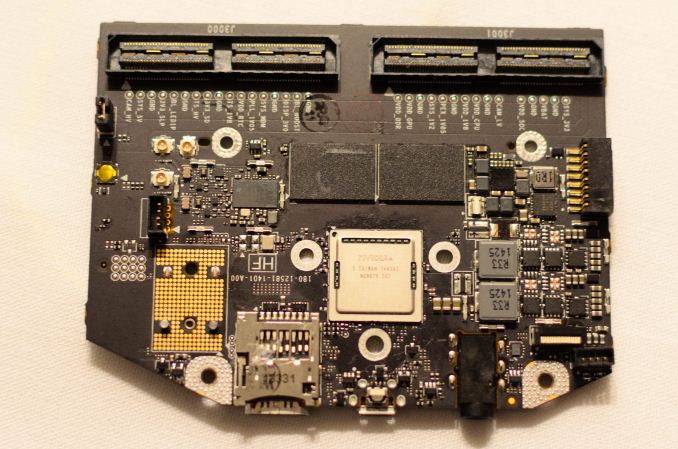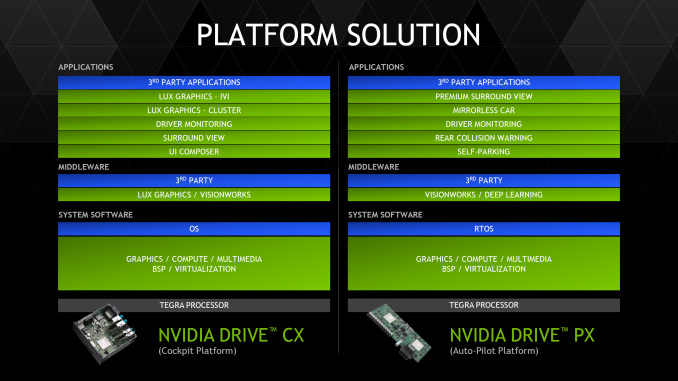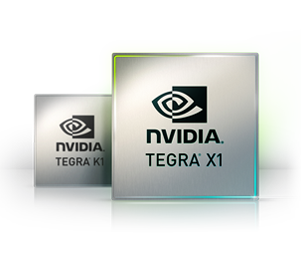NVIDIA Tegra X1 Preview & Architecture Analysis
by Joshua Ho & Ryan Smith on January 5, 2015 1:00 AM EST- Posted in
- SoCs
- Arm
- Project Denver
- Mobile
- 20nm
- GPUs
- Tablets
- NVIDIA
- Cortex A57
- Tegra X1
Final Words
With the Tegra X1, there have been a great deal of changes when compared to Tegra K1. We see a move from Cortex A15 to A57 on the main cluster, and a move from a single low power Cortex A15 to four Cortex A53s which is a significant departure from previous Tegra SoCs. However, the CPU design remains distinct from what we see in SoCs like the Exynos 5433, as NVIDIA uses a custom CPU interconnect and cluster migration instead of ARM’s CCI-400 and global task scheduling. Outside of these CPU changes, NVIDIA has done a great deal of work on the uncore, with a much faster ISP and support for new codecs at high resolution and frame rate, along with an improved memory interface and improved display output.
Outside of CPU, the GPU is a massive improvement with the move to Maxwell. The addition of double-speed FP16 support for the Tegra X1 helps to improve performance and power efficiency in applications that will utilize FP16, and in general the mobile-first focus on the architecture makes for a 2x improvement in performance per watt. While Tegra K1 set a new bar for mobile graphics for other SoC designers to target, Tegra X1 manages to raise the bar again in a big way. Given the standards support of Tegra X1, it wouldn’t be a far leap to see more extensive porting of games to a version of SHIELD Tablet with Tegra X1.
NVIDIA has also made automotive applications a huge focus in Tegra X1 in the form of DRIVE CX, a cockpit computing platform, and DRIVE PX, an autopilot platform. Given the level of integration and compute present in both DRIVE CX and PX, there seems to be a significant amount of value in NVIDIA’s solutions. However, it remains to be seen whether OEMs will widely adopt these solutions as car manufacturers can take multiple years to implement a new SoC. Compared to the 3-4 month adoption rate of an SoC in a phone or tablet, it's hard to pass any judgment on whether or not NVIDIA's automotive endeavors will be a success.
Overall, Tegra X1 represents a solid improvement over Tegra K1, and now that NVIDIA has shifted their GPU architectures to be targeted at mobile first, we’re seeing the benefits that come with such a strategy. It seems obvious that this would be a great SoC to put in a gaming tablet and a variety of other mobile devices, but it remains to be seen whether NVIDIA can get the design wins necessary to make this happen. Given that all of the high-end SoCs in the Android space will be shipping with A57 and A53 CPUs, the high-end SoC space will see significant competition once again.













194 Comments
View All Comments
harrybadass - Monday, January 5, 2015 - link
Nvidia X1 is somehow already obsolete when compared to A8x.GXA6850
Clusters 8
FP32 ALUs 256
FP32 FLOPs/Clock 512
FP16 FLOPs/Clock 1024
Pixels/Clock (ROPs) 16
Texels/Clock 16
psychobriggsy - Monday, January 5, 2015 - link
NVIDIA are claiming power savings compared to the A8X, at the same performance level.And additionally, they can run the X1 GPU at ~1GHz to achieve greater performance than the A8X. However the A8X's lower GPU clock is just a design decision by Apple so they can guarantee battery life isn't sucky when playing games.
But yet, hardware-wise the X1's GPU specification isn't that amazing when compared to the A8X's GPU.
Last up, how does a quad-A57 at 2+ GHz compare to a dual 1.5GHz Cyclone...
techconc - Monday, January 5, 2015 - link
Isn't always amazing how company A's future products compete so well against company B's current products? The X1 won't be competing with the A8X, it will be competing against the A9X. If you're familiar with the PowerVR Rogue 7 series GPUs, you'd wouldn't be terribly impressed with this recent nVidia announcement. It keeps them in the game as a competitor, but they will not be on top. Further, I'm quite certain that Apple's custom A9 chip will compare well to the off the shelf reference designs in the A57 in terms of performance, efficiency or both. If there were no benefits to Apple's custom design, they would simply use the reference designs as nVidia has chosen to do.Yojimbo - Monday, January 5, 2015 - link
Yes but how do you compare your product to something that isn't out yet? You can't test it against rumors. It must be compared with the best of what is out there and then one must judge if the margin of improvement over the existing product is impressive or not. The PowerVR Rogue 7 series is due to be in products when? I doubt it will be any time in 2015 (maybe I'm wrong). When I read the Anandtech article on the details of IMG's upcoming architecture a few months back I had a feeling they were trying to set themselves up as a takeover target. I don't remember exactly why but it just struck me that way. I wonder if anyone would want to risk taking them over while this NVIDIA patent suit is going on, however.OreoCookie - Tuesday, January 6, 2015 - link
The Tegra X1 isn't out yet either!If you look at Apple's product cycle it's clear that in the summer Apple will release an A9 when they launch the new iPhone. And you can look at Apple's history to estimate the increase in CPU and GPU horsepower.
Yojimbo - Tuesday, January 6, 2015 - link
But NVIDIA HAS the Tegra X1. They are the ones making the comparisons and the Tegra X1 is the product which they are comparing! Apple seems to be releasing their phones in the fall recently, but NVIDIA nor the rest of the world outside Apple and their partners has no idea what the A9 is like and so it can't be used for a comparison! It's the same for everyone. When Qualcomm announced the Snapdragon 810 in April of 2014 they couldn't have compared it to the Tegra X1, even though that's what it will end up competing with for much of its life cycle.Yojimbo - Monday, January 5, 2015 - link
Perhaps those are the raw max-throughput numbers, but if it were that simple there would be no reason for benchmarks. Now let's see how they actually perform.edzieba - Monday, January 5, 2015 - link
12 cameras at 720p120?! VERY interested in DRIVE PX, even if it'd never end up near a car.ihakh - Monday, January 5, 2015 - link
about the intel chip I have to say that it is a very good CPU (think about sse and avx) + a little GPUbut nvidia chip is a good GPU+ reasonable CPU
you can have windows x86 on intel chip and run something like MATLAB (also android)
and you can have a good gaming experience with nvidia's
each of them has its use for certain users
its not like that every program can use 1TFLOPS of tegra GPU
and its not like every user is "game crazy"
intel core M have its own users
and of course tegra chip is very hot for mobiles and it is a hard decision for engineers who design mobiles and tablet to migrate from a known chip like snapdragon to an unknown and new chip like tegra
I think both nvidia and intel are doing good and nor deserve blaming
but it is a good idea for nvidia to make a cooler chip for mobiles
Morawka - Monday, January 5, 2015 - link
So compared to the K1 it's twice as fast, And it also uses Twice as less energy.So does that mean it will still be a 7w SOC? albeit twice as fast.